Automatic Rules Generator Tool
Once you remove Admin rights, the user will not be able to run some applications. Additionally, once Endpoint Policy Manager SecureRun™ is enabled, the user will not be able to install and run items they download. However, we have a utility in the PolicyPak Extras folder called PolicyPak LPM Auto Rule Generator Tool, which will help you create rules to elevate applications and bypass SecureRun™ as necessary. This tool operates on one machine at a time, and it is typically used on one or a few representative machines.
NOTE: See the Auto Rules Generator Tool (with SecureRun) video for a demo of Endpoint Policy Manager Automatic Rules Generator Tool in action.
Following are the basic steps for operating the tool:
- Point the tool toward one machine (in the future this tool might work for multiple machines).
- Define locations to search.
- Determine whether to turn on the SecureRun™ Simulator.
- Create rules to allow, block, or elevate, as needed.

On the opening page, pick a location or locations to run the tool. The tool offers standard or custom locations (Other Locations) such as the User’s Desktop, and other unusual locations, as shown here.
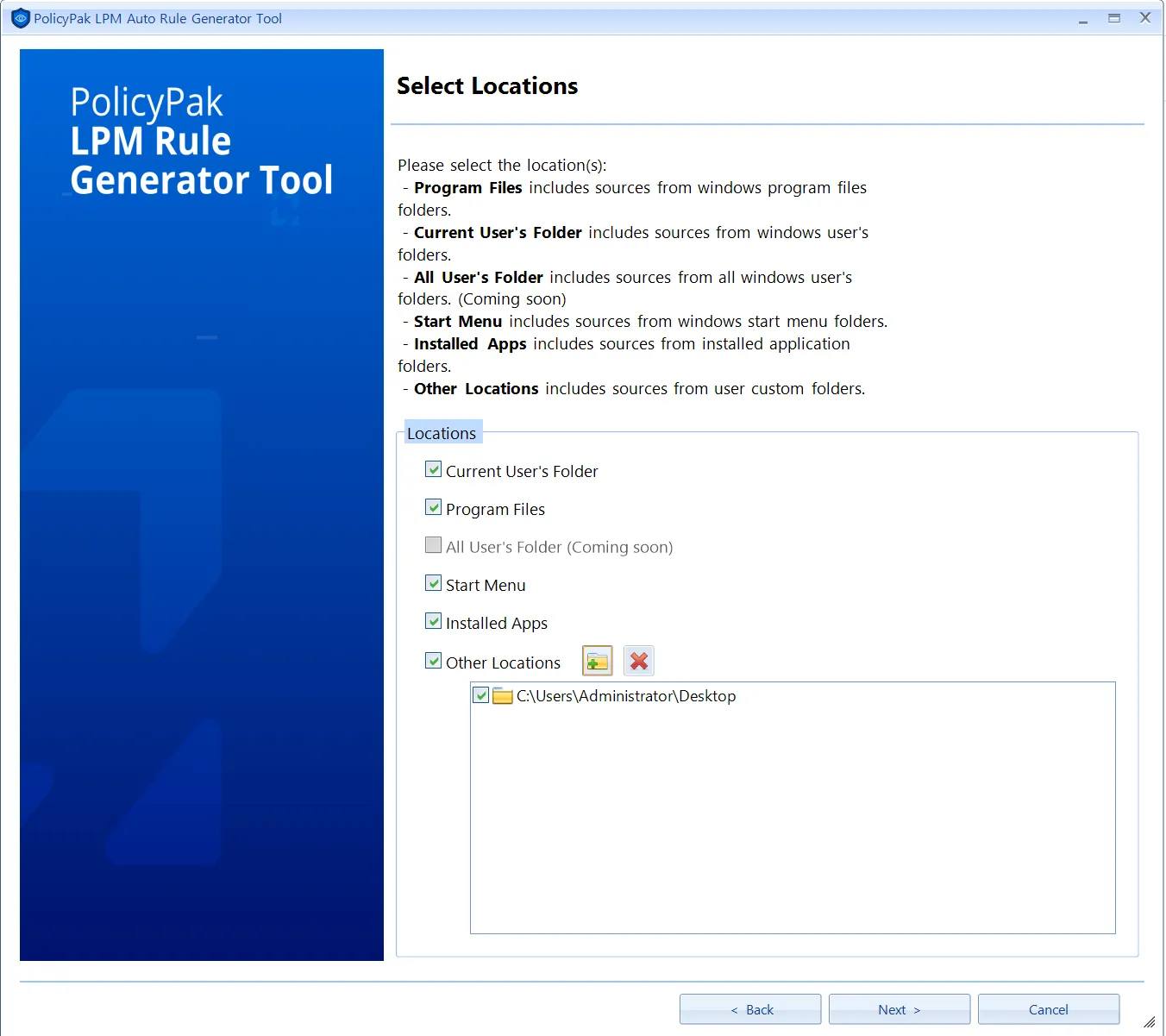
Next, select which types of items to search for.
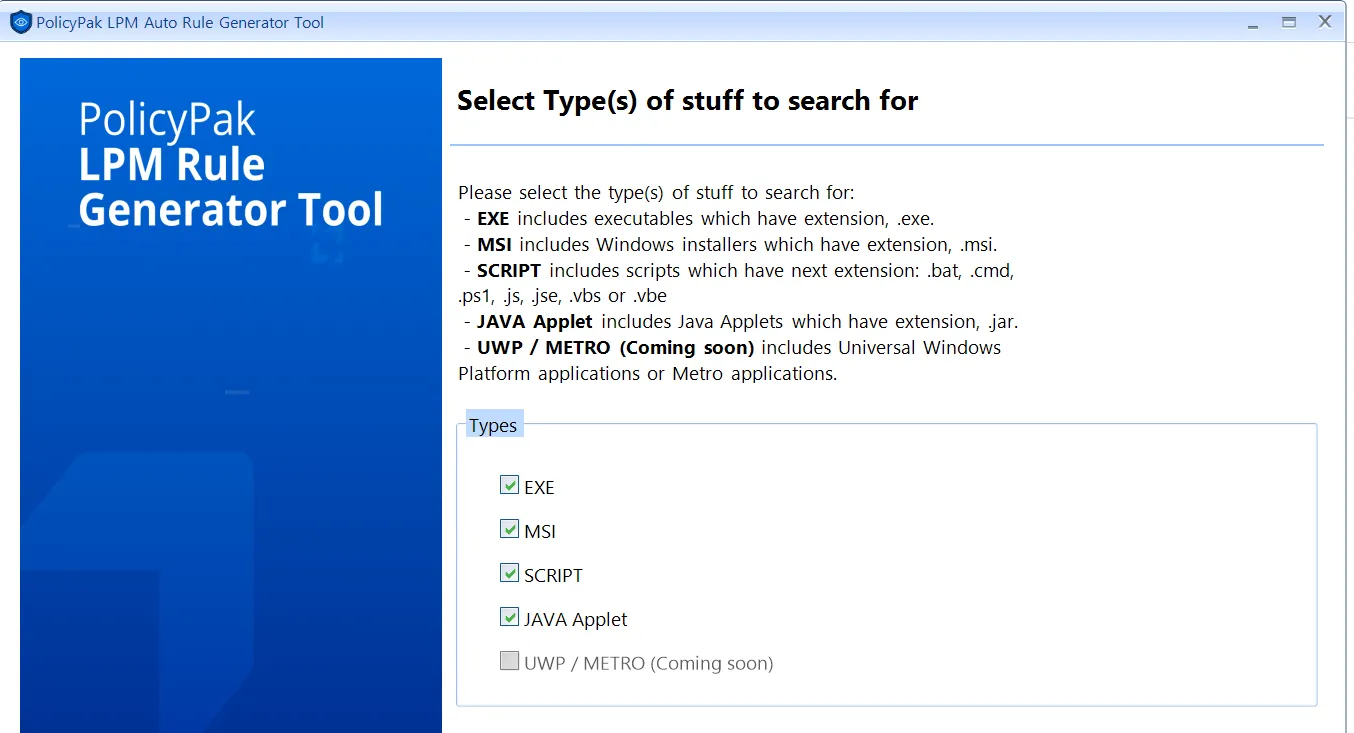
Next, you have the option to turn on the SecureRun™ Simulator. The SecureRun™ Simulator will simulate what would happen if SecureRun™ was turned on, so you can know which applications would be automatically blocked or allowed based on the members of the SecureRun™ list. You can also add a member like Microsoft Endpoint Manager (SCCM and Intune) or other installer accounts, as you would with SecureRun™.
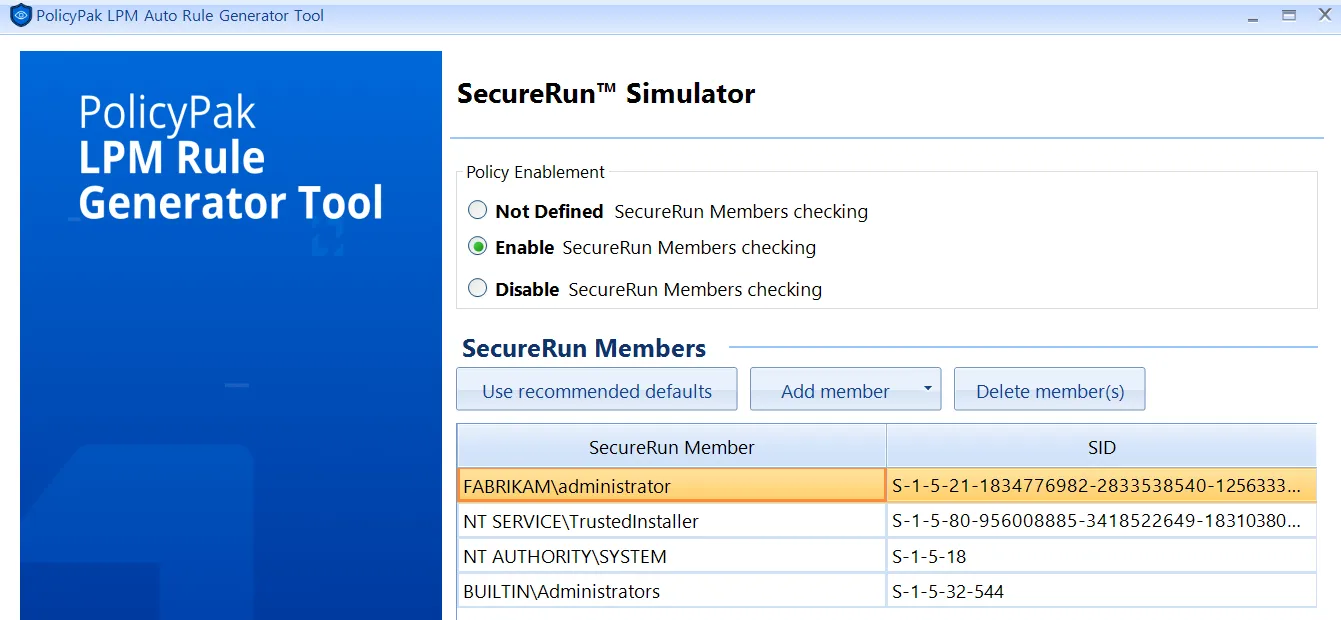
Then, you’ll be presented with all the applications and their default state and will have the opportunity to create rules that will automatically change the state. For instance, when SecureRun™ is enabled, many applications are set to Automatic Block. "
You can select the drop-down in the Action column next to any program and change the state.
- To allow NotepadP.exe to run even though SecureRun™ is on, simply change its state to "Allow" (which was previously Automatic Block).
- To allow Procmon.exe to run elevated, even though SecureRun™ would block it and Procmon would require admin rights, change the state to Elevate.
- You can also specify Block, but if you select this you will be double blocking, because not only will SecureRun™ be blocking the program (automatically), but you will have also added a Block (Deny) rule.

To save a little time, you can also hide items that are automatically allowed or blocked by SecureRun™, as seen here, to reduce the number of items shown.
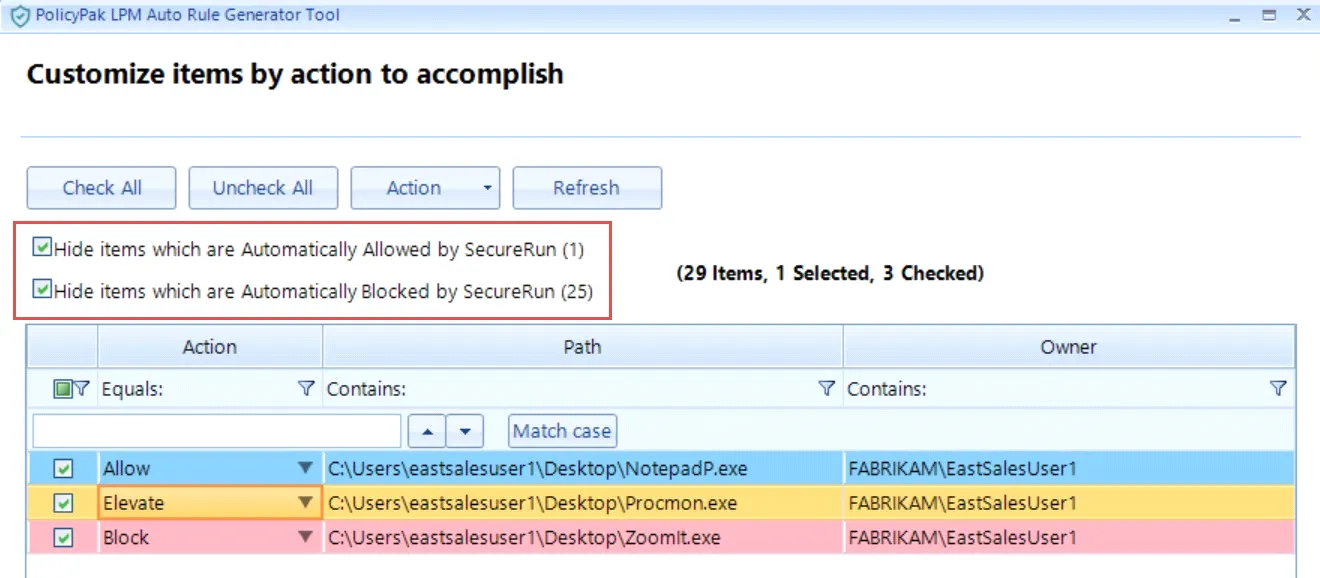
Next, you are presented with a summary of the rules you will be creating.
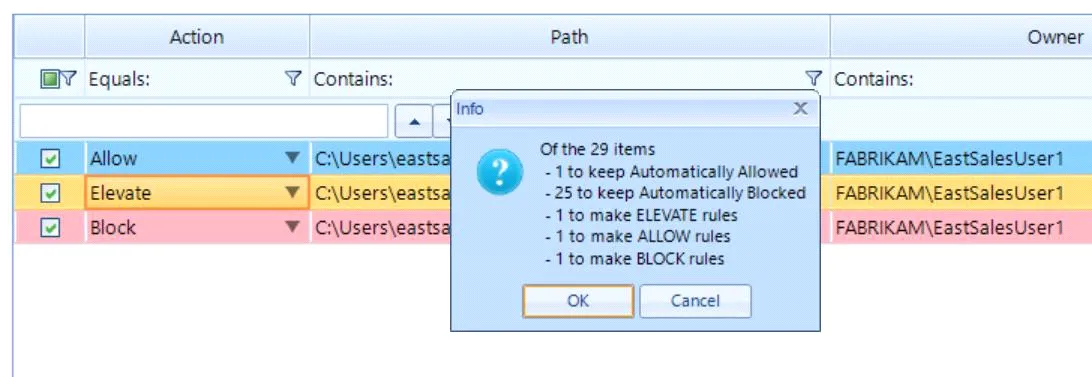
Now you can create the conditions automatically. The most secure settings are automatically checked, but you may change them to other settings if desired.
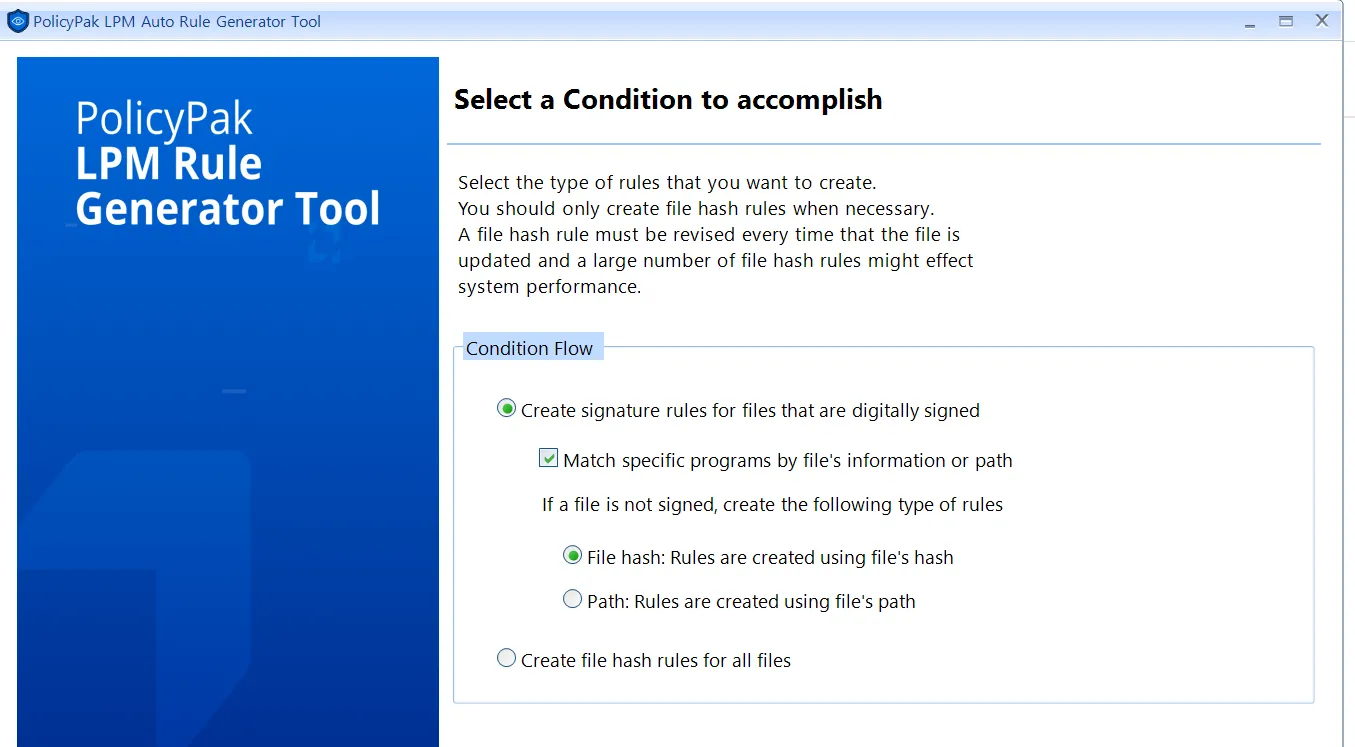
The final page, shown in here, enables you to export the rules directly into a GPO (provided you have Group Policy Create/Edit rights) or into an XML file that you can import into a Group Policy Object.
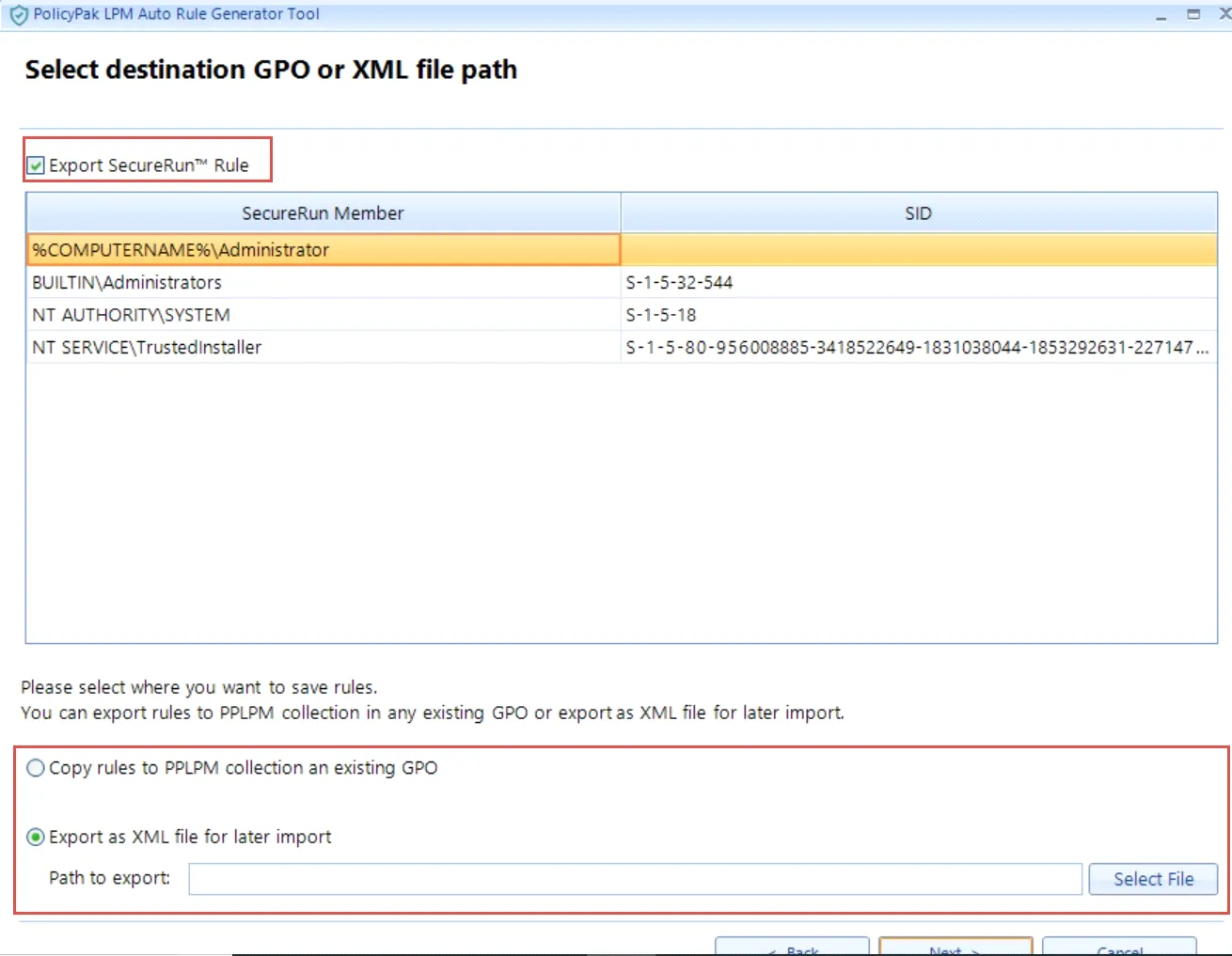
Rules are now exported.
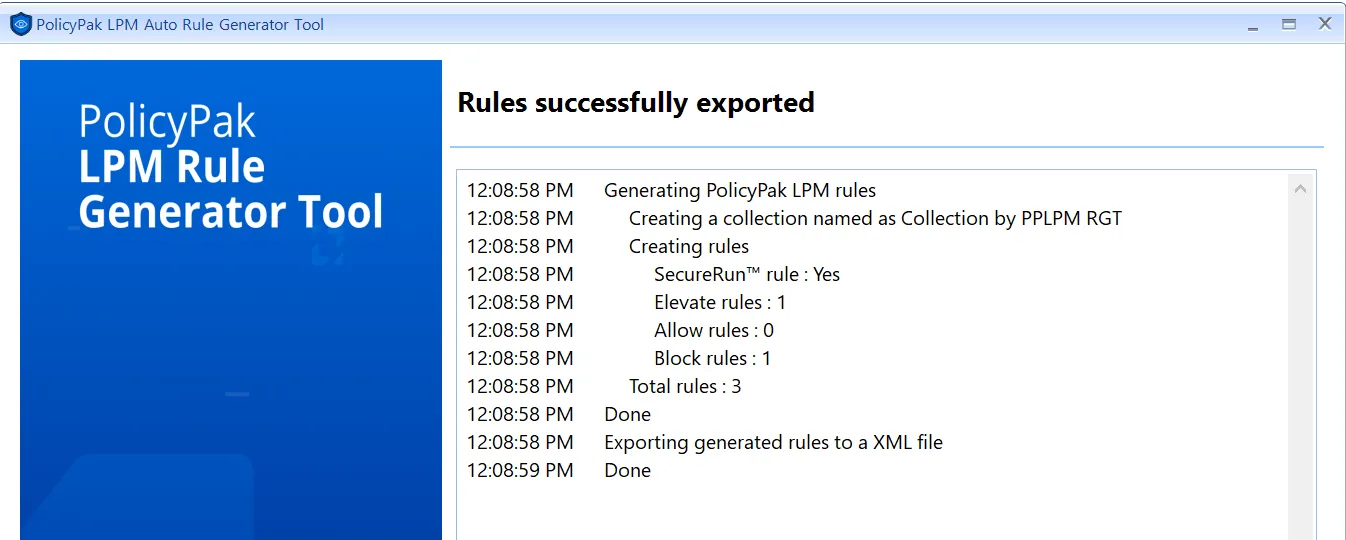
The result after looking at the GPO is shown here, with your rules ready to go.